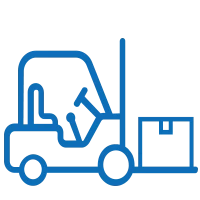Abstract
Automated forklifts are growing in popularity for applications in warehousing and manufacturing, and for good reason. With warehouse turnover well over 50%, operations are turning to automation to relieve their dependency on a transient labor pool, reduce operating costs and help increase efficiency as they strive to meet escalating demand for high throughput and fast delivery.
While not every situation is right for automation, the technology has advanced to accommodate a range of horizontal transportation and vertical storage tasks in many environments. RLTs are especially well suited to handle repetitive tasks and long runs, offering an automation solution well-suited to a variety of your customers’ applications.
By shifting certain applications to robotics, companies can focus their employees on more engaging, valueadded tasks that require human judgement – leaving the non-stop, tedious, back-and-forth load moving to robotic lift trucks. Automating transportation tasks can also play a role in limiting the chances of a safety incident, as it can avoid workflows that require employees to frequently traverse congested lift truck and pedestrian traffic areas.
To realize the greatest benefit, warehouses should evaluate which of their customers’ applications are the best fit for automation.


